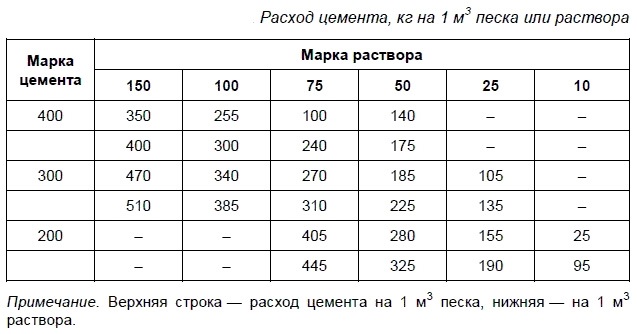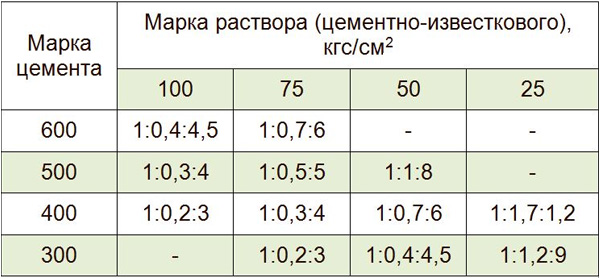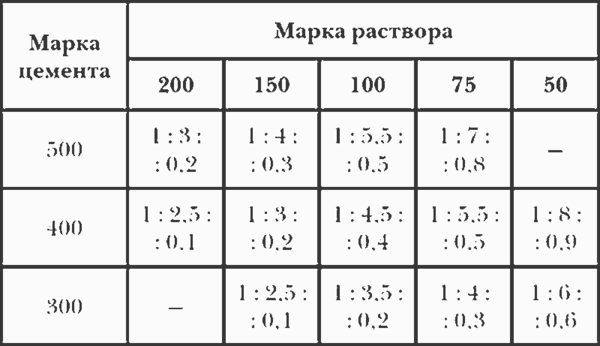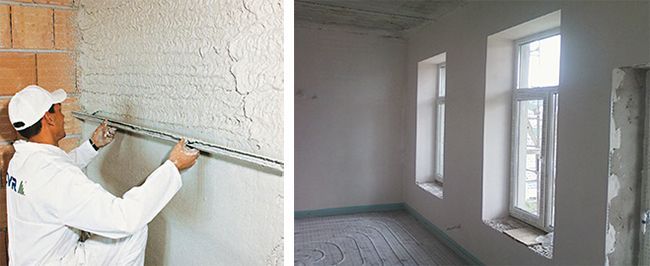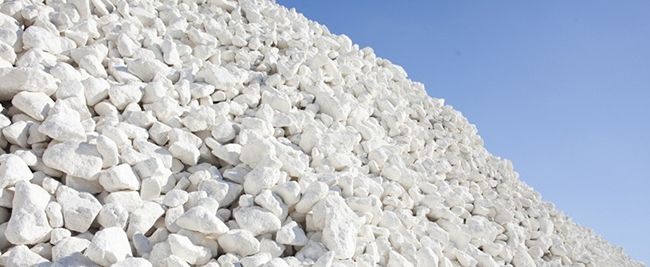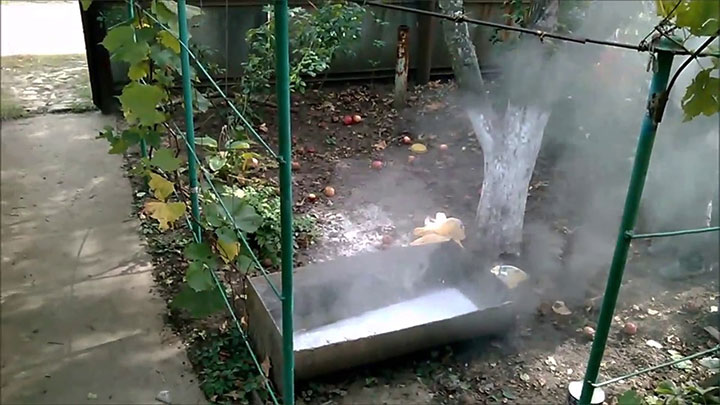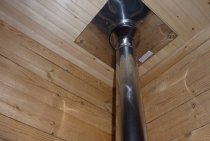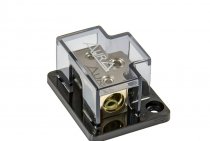Varieties of solutions
Depending on the intended purpose and qualities, all mixtures for laying bricks are divided into universal and special. The first type is used in the construction of structures from all types of wall stone and their cladding. This includes simple cement-based mortars (with small additions of lime), complex compositions of Portland cements and polymer additives, and decorative color mixtures. All of them, in turn, have different characteristics of mobility, adhesion, thermal conductivity and water absorption.
Complex masonry mortars are represented by compositions with additives of refractory materials or fillers that enhance resistance to aggressive media. They are used in the construction of facilities with non-standard operating conditions: chimneys, ventilation ducts, industrial premises. As for the universal variety, all their norms and characteristics are regulated by GOST 28913-98.
Depending on the composition, there are:
- Cement mortars for laying bricks are rigid and inactive, but with a strength suitable for the construction of structures with high loads.
- Lime mixtures are highly elastic and warm (minimum thermal conductivity), but rarely used due to brittleness after hardening. The limit of their compressive strength is 0.4 MPa, which is unacceptable for load-bearing walls. The scope of application is limited to internal work in low-rise buildings, it is rather general construction mortars, and not masonry ones.
- Mixtures of sand and cement with the addition of lime milk in small proportions are universal compositions with excellent adhesion and mobility. But with all the advantages, they are not used at the risk of intense exposure to moisture on the masonry.
- Cement-clay mortars - slightly inferior in strength to the first variety, but winning in elasticity. They are easy to lay, but difficult to prepare: you need not only to purchase clay with a suitable fat content, but also carefully knead all the lumps.
The classic masonry mixture of cement and sand is optimal for laying load-bearing and foundation structures of houses. The following proportions are adhered to:
Recommended scope
For laying furnaces and refractory structures, simple do-it-yourself mortars based on clay or complex mixtures with cement, lime or fireclay chips are used. The ratio of water does not exceed 0.25 parts of the volume of clay. The exact proportions of sand depend on the fat content of the binder and vary from 1:1 to 1:2. When mixing cement-clay mortar, they are: 0.15:1:3 or 0.2:1:5, respectively.
A really working legal way to save money. Everyone needs to know this!
Proportion calculation
For the best performance of work, it is necessary to follow the recommended proportions when preparing.
It should be borne in mind that any cement mortar that uses lime is perfect for plastering on concrete surfaces. For plastering cornices and other protruding surface elements, cement should be used, which, as practice shows, are very durable. Cement-lime can also be used for plastering a wide variety of surfaces made of wood. The proportions during cooking differ depending on what kind of finishing work is planned to be done. The most common option: 1:1:6 and 1:2:9. We are talking about cement, lime milk and sand.
When cooking, it is very important to correctly determine the viscosity. Only in this case you will get high-quality plaster
As for the ratio of cement and lime, here the proportions can be different: for plastering cornices, plinths, it should be 1:6; if we are talking about brick walls and walls made of concrete and wood, then the ratio is 1:2; if the walls are indoors and exposed to increased moisture, then the ratio is 1:7.
When cooking, it is very important to correctly determine the viscosity, or, as it is also called, the fat content of the composition. In the event that the solution turns out to be too greasy, it will crack shortly after drying, which will make all the previously done work completely in vain.
And if he turns out to be skinny, then it will simply be impossible to work with him. If the solution turned out to be too greasy, then it is recommended to add a small amount of cement there, and if it is lean, then a thickener should be added, then it will become plastic and it will be easy to work with it. You can determine how the cement material turned out by lowering a shovel into it: if a lot stuck to it, then it turned out to be fat, if nothing stuck to the shovel, then it means it is skinny. Ideally, the lime material should adhere slightly to the shovel, such lime material can be used for plastering work.
We prepare lime mortar for plastering
Since it is quite easy to make lime mortar for plaster, it is often used for finishing walls and ceilings. The technological process of arranging the plaster includes three stages: spraying, soiling and covering (the total layer thickness is not more than 25 mm).
To prepare a plaster mortar for spraying, mix fluff and sifted sand in a ratio of 1:3 or 1:4; for priming - in a ratio of 1: 2; and for "covering" - 1: 1.5. Then pour water and mix (be sure to remove the quicklime pieces from the mixture).
Advice! For more convenient mixing of the mixture, we recommend initially mixing only 1/3 of the required volume of sand and water with fluff, then add the remaining water and sand and mix everything thoroughly again. Moreover, we pour water from a watering can, and do not pour it in a straight stream.
We get the fluff as follows:
We put lump lime in metal (without signs of corrosion) or wooden containers (but not plastic).
Important! We select the volume of the container, taking into account the fact that in the process of extinguishing the fluff will increase by 3 ÷ 4 times
Pour lime with cold water (1 liter of water per 2 kg of fluff) and cover with a lid. The boiling process begins.
Important! When quenching, a chemical reaction occurs (quite violent), which is accompanied by a large heat release. Therefore, the use of goggles, protective clothing, rubber gloves and boots is mandatory.
- At the end of the boil, mix the mass thoroughly and let the solution brew for 2 weeks.
- Before direct use, we sift dry calcium hydroxide through a construction sieve (to prevent poorly quenched particles from entering the mixture).
Fluff-based compositions have a number of advantages:
plasticity;
antibacterial (especially important when finishing wooden surfaces);
relatively low cost;
sufficient cooling time.
Advice! We recommend that you prepare lime mortar for plaster immediately before use. If it hardens: just pour water into it and stir.
Cons of such mixtures:
Lime hardens slowly: therefore, such a composition begins to “float” in a day.
Advice! When plastering walls, apply the second layer of the mixture only after the first one has completely dried.
Lime absorbs moisture well: therefore, it is not recommended to finish rooms with high humidity with mixtures based on it.
Textured coatings with cement-lime plaster
To save on materials for decorative finishing, you can also use cement-lime plaster. There are several application techniques to create different surfaces.
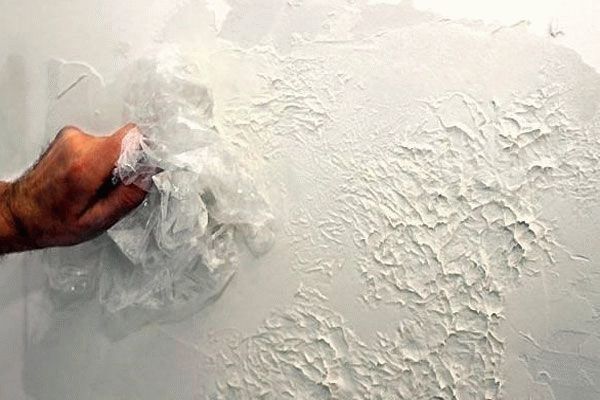
Fur coat trim
First of all, shallow furrows are made on the prepared surface. Then a solution with the consistency of thick sour cream is prepared, decorative mineral fillers and dyes are added to it. Then applied using one of the following techniques:
- Through the grid. First of all, a 1x2 m wooden frame is made and a metal mesh with 2.5 mm cells is installed on it.In the corners of the structure, wooden slats about 10 cm long are stuffed so that the frame can be installed at the same distance from the surface. The plaster is thrown in uniform portions with the help of a falcon through the grid. The container with the material will need to be constantly moved, so it should be as light as possible.
- Spray with a broom. The broom rods are cut so that they do not fly out with the plaster. Then the tool is dipped into the solution, brought to the surface, and the broom is hit several times with a stick. So the entire surface is treated.
- Brush spray. A stiff brush is dipped into the prepared solution and brought to the surface with the bristles up. Then a stick is passed along it, as a result of which the plaster is sprayed over the surface.
Finishing with rollers and stamps
You can make these tools yourself, but it's easier to buy them at a hardware store. The stamps are moistened with soapy water, after which they are pressed tightly against the newly treated wall and abruptly torn off. The result is embossed patterns. Working with a roller is even easier. On its surface there is a relief with which the wall is decorated. Roll over a fresh coating with a roller moistened with soapy water and leave to dry.
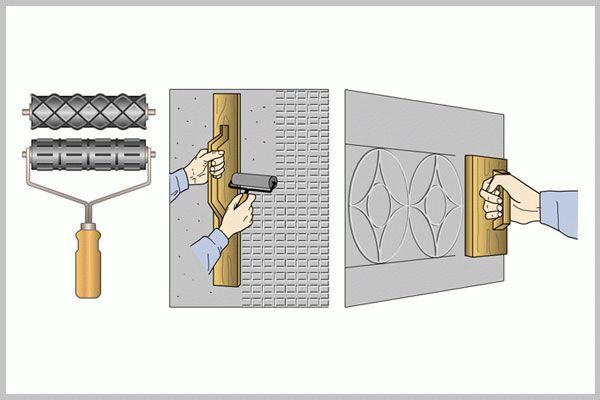
Release technology
In this case, a visual imitation of sand dunes is formed on the walls. A grater is pressed against fresh plaster and sharply pulled back. Part of the material will reach for the tool, which will provide the necessary visual effect. You can also use a brush. It is leaned against the surface and the entire wall is treated. Movements should be sharp and chaotic. A hard brush will give clear marks, while a soft brush will give more blurry marks.
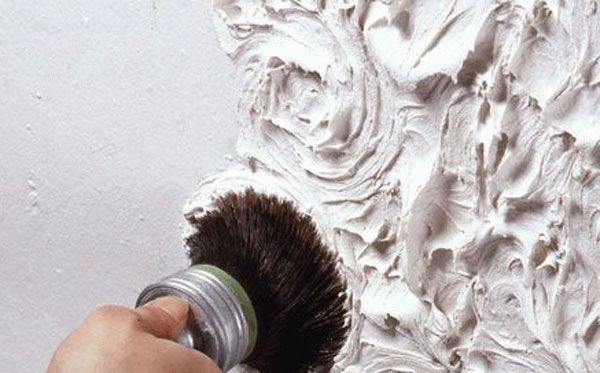
Using cycles
This tool is a steel plate with a sharpened edge, it is used for finishing. The surface is drawn into rectangles, a rule is applied to the lower face, the cycle is pressed against the surface with the second hand and drawn along the rule, while pressing the tool strongly. The teeth of the scraper will cut into the surface, creating a pattern. Also, an unusual pattern can be obtained by making circular movements with the tool.
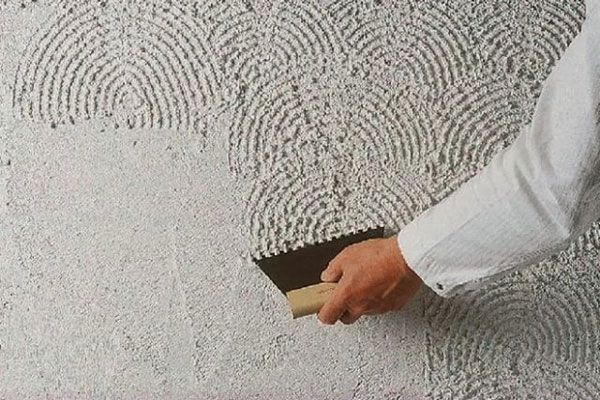
Checkers drawing
The surface is divided into squares using a level and lined. Then each square is treated with a trojan with crosswise movements. In some cases, bush hammer, which is simply stamped on the surface. It is also possible to combine both instruments within the same checker.
The preparation of the mortar and the finishing of the walls with cement-lime plaster are quite simple processes, but in order to obtain a high-quality coating, it is necessary to strictly follow the above instructions.
Cement-lime plaster everything you need to know about these types of building mixes
The liberated limestone-cokina is also the "eternal stone" in the buildings of ancient Rome, as in our latitudes and mountains, limestone is unstable, and our ancestors of white stone buildings are regularly overlapped. With increasing pressure, the solubility of CO2 increases with decreasing pressure, the solubility decreases and releases carbon dioxide. Indeed, the gas descends quickly when the pressure drops, whether it be mineral water or champagne - cool and cool to reduce the rapid release.
When diving inside, it is known that pressure and temperature increase, and the balance of solid calcite and solution changes. It appeared to be soluble and then stable, as described in the Epigenesis chapter.
When the composition is homogeneous, the origin of the limestone is not the same, although it is mostly biogenic.
These are the shells and skeletons of organisms. Limestone of large clusters, mainly consisting of shells and skeletons of organisms.
Biogenic limestone began to form in significant quantities from the beginning of the Paleozoic, when mollusks began to build their shells from calcite and aragonite. It was a kind of ecological revolution for some organisms, and disasters for others - in more than a geologically short time - significantly changed the composition of the atmosphere: this lost CO2 became lighter, more transparent, the greenhouse effect began with the cooling of the planets.
Prejšnja14151617181920212223242526272829Naslednji
Submission date: 2015-06-27; Total 443;
SEE MORE:
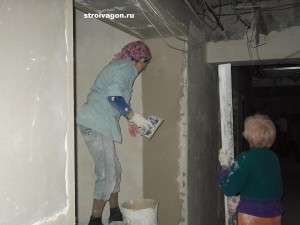
The composition of the lime mortar used in construction consists of lime paste or quicklime ground with the addition of sand and water. Ground quicklime began to be used for construction needs as a binder in solutions relatively recently.
Apply without prior quenching, like ordinary cement.
If it is then properly mixed with sand, then a solution of excellent quality is obtained, much stronger than with the use of slaked lime. Ground quicklime is not stored for a long time, because it quickly picks up moisture from the air and turns into fluffy lime.
Read more on http://stroivagon.ru mortars
Therefore, it should be stored in well-closed barrels for up to two months no more.
In paper bags, such lime can be stored for no more than ten days. If a lime mortar is prepared based on ground quicklime, then no more than 1/2 of the total volume of lime is added to the water. (For example, one and a half buckets of water are added to one bucket of ground quicklime).
To increase the plasticity and strength of the lime mortar, as well as to reduce the hardening time, a little cement is added. Such a solution is more convenient to lay and process.
In a humid environment, lime mortar hardens very slowly, so cement is added to the mortar to speed up the setting process and give it the necessary strength.
Read more on the site mortar for laying the furnace
All components of the composition of the lime mortar are strictly dosed and thoroughly mixed.
Fluffy lime is available in hardware stores, mostly packaged in bags. It is better to immediately close it with water, because it quickly deteriorates from moisture in the air.
Material Requirements Calculation
There are various methods for determining the required amount of building materials. You can, for example, use the normative indicators of the amount of mortar for brick walls of various thicknesses:
- with a wall thickness of one brick, 65 liters of composition will be required to build 1 sq.m of wall;
- one and a half wall thickness needs an increased consumption of a binder mixture up to 100 liters.
 Consumption of mortar per masonry cube
Consumption of mortar per masonry cube
The amount increases proportionally for walls built in two or two and a half bricks.
Knowing the calculation method, you can independently determine the amount of cement and sand:
- Determine the volume of masonry, multiply the perimeter of the building by the height and thickness of the walls.
- Subtract the volume of window and door openings from the resulting number.
- Calculate the number of composition cubes by multiplying the volume of the walls by a factor of 0.2–0.3.
- Calculate the volume of cement by dividing the cubic capacity by the proportion of cement according to the proportion.
- Determine the weight of cement in kg by multiplying its cubic capacity by the density equal to 1300 kg/m3.
- Get the number of bags of cement by dividing the resulting weight by 50 kg.
Having calculated the need for cement, it is easy to determine the required amount of sand, knowing their ratio.
Helpful information
Masonry methods
Brick is laid according to special rules so that the building structure is monolithic and durable.
To make a solution, use cold water without any pollution, its temperature should be 15-20 degrees.
All dosages in the manufacture of masonry mixture must be observed exactly.
- Concrete grade 100, take 1 part of cement from 1/2 to 7/10 parts of water;
- Cement-sand mortar. 8/10 parts of water are used on a part of cement.
- Mark M100 - 300-250 kg per m3;
- M150 - 400-330 kg per m3;
- M200 - 490-410 kg per m3;
- M300 - 600-510 kg per m3.
Solution mobility
The mobility of the solution is an important characteristic. This value depends on what ingredients are mixed into the solution.
To check the mobility of the solution, a cone is used, the angle of which is 30 degrees, the height is 15 cm and the weight is 300 grams. Immerse the cone in the prepared solution. The number of centimeters the cone plunged is the number showing the mobility of the train.
We measure the mobility of the solution
Why measure the mobility of a solution?
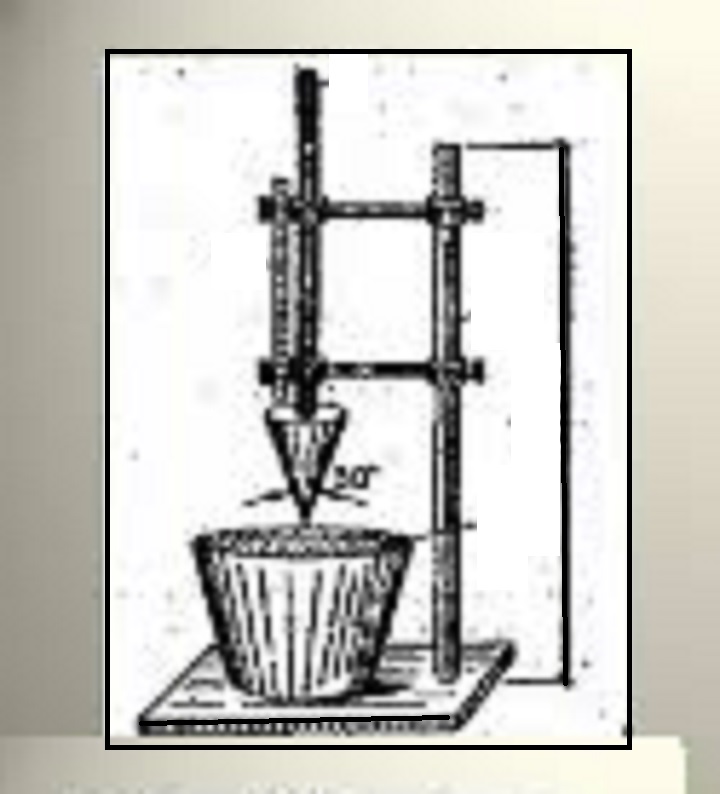
Nowadays, different masonry mortars are used, but their choice depends on the meteorological conditions under which bricklaying will be carried out and for what purposes the building material will be used.
- For a solid brick, a solution with a mobility of 9-13 cm is taken,
- for hollow bricks take a mixture with a mobility of 7-8 cm,
- in hot weather, take a solution with a mobility of up to 12-14 cm.
Before starting work with bricks and masonry mortars, carefully study all the nuances, choose the right mortar, and prepare it correctly. And best of all, entrust the work to specialists in this field, they must do everything according to the rules. We wish you good luck in your endeavors!
Application of cement-lime plaster
The first layer is called splatter. It serves to ensure the most dense contact of the plaster with the wall. To do this, a more liquid solution is prepared, which is collected on a trowel or spatula and simply thrown onto the wall. In most cases, leveling is not required, but it is better to spread the mixture a little over the surface with one of the hand tools.
The next layer is soil. This is the main part of the plaster, so its thickness can reach 5 cm. The material is applied with a wide spatula with a four-level beacons, after which they pass along the surface with a rule. You need to move from the bottom up, while making zigzag movements, after which the procedure is repeated.
During work with the rule - the solution remaining on the blade of the tool must be thrown onto the upper parts of the wall.
After that, you should wait a few hours until the solution sets and remove the beacons. The resulting grooves are sealed with a mixture of the same consistency as for the main work, after which, using narrow spatulas, corners and areas near the ceiling and floor are trimmed.
Lastly, cover is applied. This layer is the final layer, so its thickness is no more than 3 mm, and the quality of the coating must be high. The material is applied with spatulas and trowels, leveled, and after drying, it is treated with floats and polished.

Consumption of mortar for masonry
Today, for brickwork, you can use a variety of types of cement mortars, which differ not only in proportions, but also in components. The proportions are highly dependent on what result is needed and what components will be used for this. Consider what ingredients are used and in what quantity to prepare a quality masonry mix:
- For a solution of brand 100, you need to take: a bucket of cement M400, sand - four buckets. The ratio of proportions is one to four. The solution should include 50 to 100 g of detergent for elasticity.
- For a solution of brand 100, we take cement M500 - one bucket, sand - 5 buckets, washing solution. The proportions are one to five.
- For a solution of brand 200, you need to take: cement M400 - one bucket, sand - two buckets, detergents - 50-100 g. The proportions are taken one to two.
It is used for masonry and a mixture containing lime, but it is rarely used, since its strength is low. Most often, lime-cement mortars diluted with lime paste are kneaded. With the help of such a mixture, almost any masonry is possible, its plasticity is great. Often this option is preferable to conventional water-based cement.
The correct proportions of the components
The quality of the mixture for laying facing bricks is directly affected by the operational properties of its ingredients.
If the facing surface is protected from external influences, to prepare the mixture you will need:
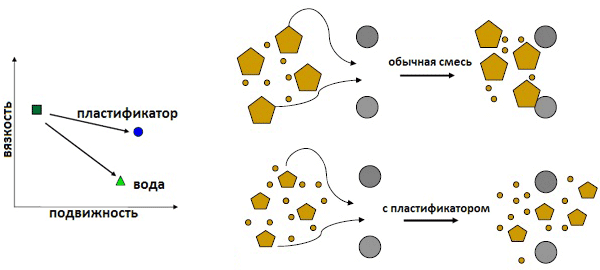
- cement - 1 part;
- sand - 6 parts;
- quicklime - 1 part.
To prepare a solution of increased strength, you need:
- cement - 1 part;
- sand - 4 parts;
- lime - 0.5 parts.
You can use plasticizers.
It is necessary to knead the mortar, taking into account the type of brick and its quality. Sand-lime brick practically does not absorb moisture, which means that the mortar for its masonry must be thick, with very little water in its composition. In this case, the proportions of the components will be as follows: 1 part of cement and slaked lime, 4 parts of sand.
But the hollow brick is able to absorb moisture well. The mortar for its masonry excludes the use of clay or lime. The solution is prepared from 1 part of cement and 4 parts of sand. It has less plasticity, but the lining will have good thermal insulation properties. It is better to add plasticizers to it.
Normal mortar has a brown color. Now, to obtain an original, beautiful cladding, the mixture can be tinted to match the material used or, conversely, in a contrasting color. For example, when facing with red brick, a solution of white or black color is used.
//www.youtube.com/watch?v=81X9JfptQJw
Yellow bricks are laid with brown or red mortar, while gray bricks are laid with white mortar. To obtain the desired shade, special pigments are added to the mixture. For example, with the addition of red lead, the mixture will turn red. To get a brown or black solution, carbon black is added to it. White quartz sand or white cement will give the mortar a white color.
Facing bricks are used for both interior and exterior decoration. It can be of different colors, shapes and textures. Finishing them gives the walls of the building strength and aesthetically attractive appearance.
The strength and durability of facing brick masonry depends on the quality of the mortar used in the work. In turn, the properties of the solution are directly dependent on the ingredients included in its composition.
//www.youtube.com/watch?v=u9dnUeiSsgg
The quality of the outgoing materials, the correctness of the prepared building mixture will ensure a strong adhesion of the facing brick to the surface.
cement mixture
A simple cement mortar is mixed from sand, cement and water. The proportion depends on the brand of cement. Before adding water, cement and sand are thoroughly mixed together.
When additional ingredients are added, a complex mixture is obtained. Often, cement mortar is supplemented with the addition of lime paste. But then you need to use it quickly enough. As part of the mortar, 1-3 parts of other binders and 6-15 parts of sand are laid on one part of cement.
A heat-resistant cement mortar is obtained by adding Portland cement and small broken bricks to a simple cement-sand cement.
Independent production of quicklime
It should be said right away that it is easier and faster to purchase burnt lime, but if there is a desire to carry out the whole process from start to finish, then you need to buy ordinary lime. The material is used in many industries, so if there are factories for the production of building mixtures or bricks nearby, you can find out there. Otherwise, you will have to look for a supplier on the network.

For the next operation, you will need an oven. It needs to be melted with coal, after the temperature rises - add a little more coal and level it in the oven in an even layer. Lime is spread on it as quickly as possible, sprinkled with a small amount of coal dust on top, the furnace is closed and left overnight. In the morning, lime is removed from the kiln into a metal container. The temperature of the material will still be high, so use pliers, protective gloves and goggles. After the lime has cooled, you need to grind it with a hammer and proceed to slaking.
